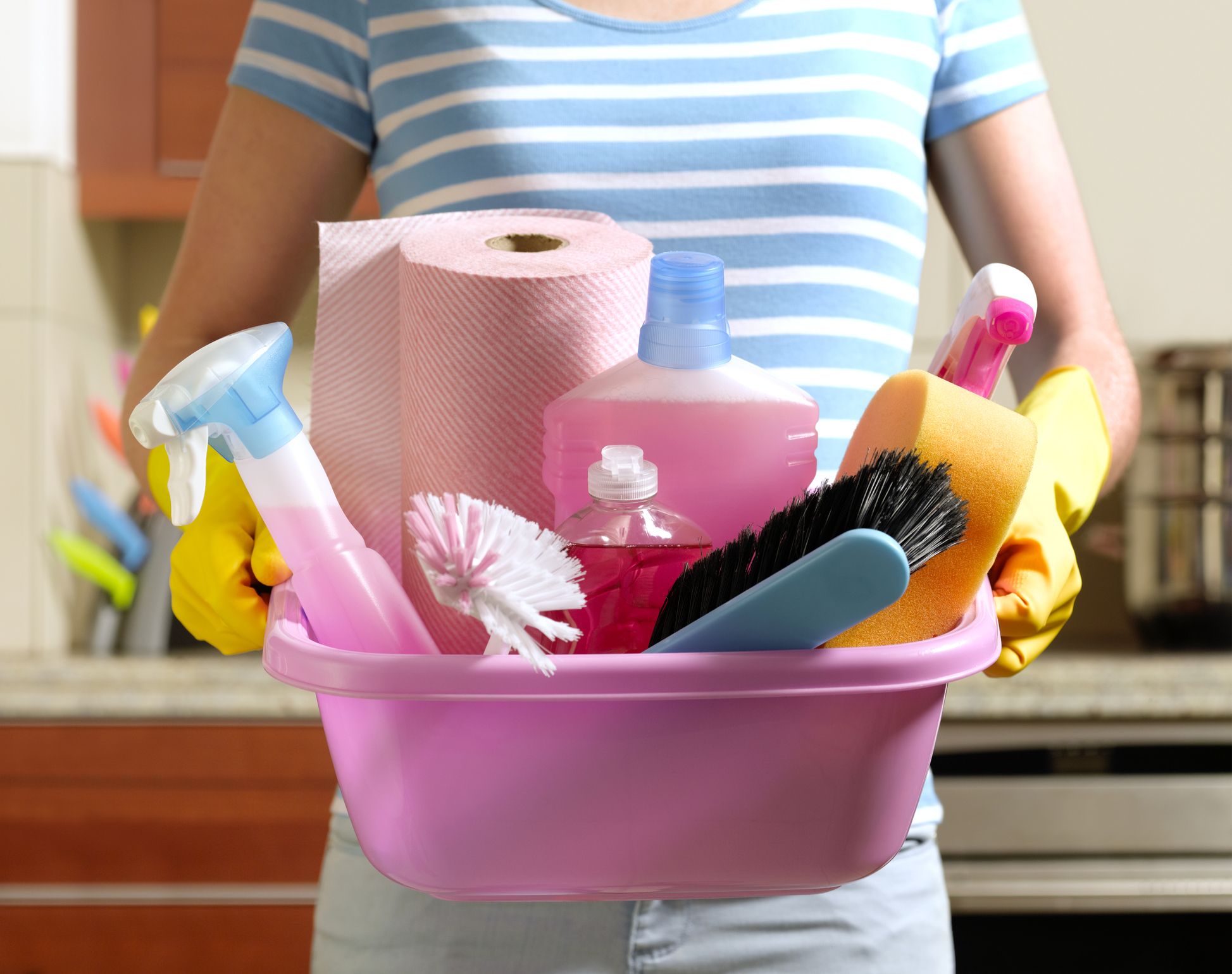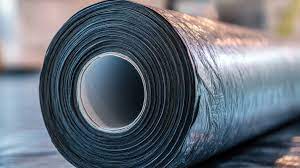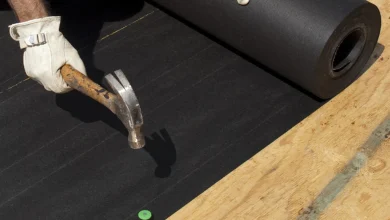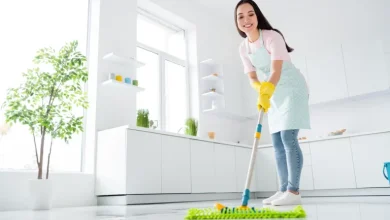Housecleaning Smarts – 10 Steps To Simplify Your Cleaning

Introduction
Cleaning your home doesn’t have to be a daunting task. With a well-thought-out strategy, you can simplify your cleaning routine and keep your living space spotless. This guide will walk you through ten steps to make housecleaning easier and more efficient. Whether tackling chores on your own or using a Seattle house cleaning service, these tips will help you maintain a cleaner home with less effort. Let’s dive into the world of housecleaning smarts!
Start with a Plan
Creating a plan is the first step to simplifying your cleaning routine. A well-structured plan helps you stay organized and ensures you don’t overlook any tasks. Start by identifying the areas of your home that need the most attention. Divide your tasks into daily, weekly, and monthly chores. If cleaning feels overwhelming, consider hiring professional Seattle home cleaners for a deep clean or for regular maintenance cleaning.
Pro Tip: Use a digital app or a physical planner to keep track of your cleaning schedule. This can help you prioritize your chores and ensure everything gets noticed.
Benefits of Planning
Planning your cleaning tasks can save you time and reduce stress. With a clear plan, you can tackle each task systematically, making the process more efficient. Additionally, planning helps you identify which tasks can be delegated to family members or a cleaning service.
Creating a Checklist
A checklist is an essential tool for effective cleaning. List all the tasks that need to be done in each room. You can find templates online or create your own. Check off tasks as you complete them to track your progress.
Weekly vs. Daily Tasks
Understanding which tasks need daily attention and which can be done weekly. Daily tasks include making beds, wiping surfaces, and washing dishes. Weekly tasks could involve vacuuming, mopping floors, and cleaning bathrooms. Having this distinction helps you manage your time better.
Declutter Before You Clean
Decluttering is a vital step that should always precede cleaning. It’s easier to clean surfaces free of unnecessary items, and a decluttered home feels more inviting and less chaotic.
Pro Tip: Set a timer for 15 minutes and focus on decluttering one area at a time. This keeps the task manageable and prevents overwhelm.
Importance of Decluttering
Decluttering not only makes cleaning more accessible but also improves the overall ambiance of your home. Clutter can make spaces feel cramped and stressful, whereas a decluttered space is calming and more functional.
How to Declutter
Begin by sorting your items into three categories:
1. Keep, donate, and throw away.
2. Be honest with yourself about what you need and use.
3. Store items out of season or used infrequently in labeled bins to keep them organized.
Tips for Effective Decluttering
To maintain a clutter-free home, practice regular decluttering sessions. Keep a donation box handy to quickly discard items you no longer need. Additionally, adopt a one-in, one-out rule to prevent new items from piling up.
Use the Right Tools
Having the right tools makes a significant difference in your cleaning efficiency. Quality tools can save you time and effort, making cleaning smoother and more effective.
Pro Tip: Invest in a good-quality vacuum cleaner with various attachments to handle different surfaces and hard-to-reach areas.
Essential Cleaning Tools
Stock your cleaning kit with essential tools such as microfiber cloths, a sturdy mop, a reliable vacuum cleaner, and various cleaning solutions. Microfiber cloths are especially effective as they can be used on multiple surfaces and are great for trapping dust and dirt.
Quality vs. Quantity
When it comes to cleaning tools, quality is more important than quantity. Investing in high-quality tools may be more expensive upfront, but they last longer and perform better, ultimately saving you money and hassle.
Tool Maintenance
Regularly maintain your cleaning tools to ensure they remain effective. Clean your vacuum filters, wash microfiber cloths, and replace worn-out brooms and mops. Proper maintenance prolongs the life of your tools and keeps them working efficiently.
Develop a Cleaning Routine
A consistent cleaning routine helps you stay on top of household chores without feeling overwhelmed. Establish a schedule that works for you and stick to it.
Pro Tip: Break down your cleaning tasks into smaller, more manageable chunks to avoid feeling overwhelmed.
Establishing Routines
Creating a routine involves setting specific days for certain tasks. For example, you might vacuum on Mondays, dust on Tuesdays, and clean the bathrooms on Wednesdays. This approach spreads out the workload and makes it more manageable.
Room-by-Room Strategies
Tailor your cleaning routine to the needs of each room. For instance, the kitchen and bathrooms typically require more frequent cleaning, while bedrooms and living areas may need less frequent attention. Customize your schedule to ensure every area gets the care it needs.
Adapting Routines
Life can be unpredictable, so be flexible with your cleaning routine. If you miss a day, don’t stress—pick up where you left off. Adjust your schedule as needed to accommodate changes in your lifestyle or household.
Focus on High-Traffic Areas
High-traffic areas of your home tend to get dirty quickly and require more frequent cleaning. Focusing on these areas ensures your home remains clean and inviting.
Pro Tip: Place doormats at entrances to reduce the amount of dirt and debris tracked into your home.
Identifying High-Traffic Areas
Common high-traffic areas include entryways, kitchens, bathrooms, and living rooms. These areas see the most use, accumulating dirt and clutter more quickly.
Prioritizing Tasks
Prioritize cleaning tasks in high-traffic areas to maintain a clean environment. Regularly sweep, vacuum, and wipe down surfaces in these areas to keep them looking their best.
Maintaining Cleanliness
In addition to regular cleaning, consider implementing preventative measures such as using protective coverings on furniture and rugs and encouraging family members to remove shoes before entering the house.
Clean from Top to Bottom
Cleaning from top to bottom ensures that dust and debris fall to lower surfaces, preventing the need to clean the same area twice.
Pro Tip: Always start by dusting ceiling fans and light fixtures, then move down to shelves, furniture, and finally, the floors.
Cleaning Sequence
Follow a logical sequence when cleaning. Start with the highest surfaces, such as ceiling fans and light fixtures, then move on to shelves and furniture, and finish with the floors. This approach ensures that dust and debris are captured as you move downward.
Dusting Tips
Use microfiber cloths or dusters to trap dust effectively. Avoid using feather dusters, which tend to spread dust around rather than capturing it. For hard-to-reach areas, use extendable dusters or vacuum attachments.
Importance of Order
You are maintaining a specific order while cleaning, which saves time and effort. By systematically moving from top to bottom, you ensure that each surface is cleaned without having to redo any tasks.
Use Multi-Tasking Cleaners
Multi-tasking cleaners simplify your cleaning routine by reducing the products you need. Look for versatile cleaners that can handle multiple surfaces and tasks.
Pro Tip: Use a mixture of vinegar and water as a natural, multi-purpose cleaner for glass, countertops, and floors.
Benefits of Multi-Tasking Cleaners
Using multi-tasking cleaners saves space and money. Instead of having a separate product for each surface, you can use one or two versatile cleaners for various tasks, making your cleaning process more efficient.
Recommended Products
Look for products labeled as multi-surface or all-purpose cleaners. These are typically safe for countertops, floors, and other joint surfaces. Natural cleaners like vinegar, baking soda, and lemon juice can be practical and eco-friendly alternatives.
How to Use Them
Follow the instructions on the product label for best results. For natural cleaners, mix the ingredients in the right proportions and test on a small area first to ensure compatibility with your surfaces.
Enlist Family Members
Cleaning should be a shared responsibility. Enlisting the help of family members not only lightens your load but also teaches valuable life skills.
Pro Tip: Create a chore chart and assign tasks based on age and ability to ensure everyone contributes to keeping the home clean.
Family Involvement
Get everyone involved in cleaning tasks. Assign specific chores to each family member, ensuring they understand their responsibilities. Rotate tasks regularly to keep things fair and to ensure everyone learns different skills.
Age-Appropriate Chores
Assign chores based on the age and abilities of your family members. Young children can help with simple tasks like picking up toys, while older children and adults can handle more complex tasks like vacuuming and cleaning bathrooms.
Creating a Chore Chart
A chore chart is a great way to organize and track cleaning tasks. List each family member’s chores and the days they must be done. Please review the chart regularly and adjust it to ensure everyone is doing their part.
Tackle One Room at a Time
Focusing on one room at a time helps you stay organized and ensures thorough cleaning. This method prevents feeling overwhelmed by breaking down tasks into manageable parts.
Pro Tip: Set a timer for each room to keep yourself focused and motivated. Aim to complete each room within a set time frame.
Room-by-Room Cleaning
Begin by choosing one room and focus solely on cleaning it from top to bottom. Once you’ve finished that room, move on to the next. This approach ensures each area receives adequate attention and thorough cleaning.
Staying Focused
Staying focused on one room at a time prevents distractions and allows you to see immediate results, which can be motivating. Resist the urge to move between rooms until you’ve completed the one you’re working on.
Efficient Room Cleaning
To clean efficiently, start with decluttering and organizing, dusting and wiping down surfaces, and finish with vacuuming or mopping the floors. This systematic approach ensures all areas are noticed.
Schedule Deep Cleanings
Regular deep cleanings are essential for maintaining a healthy and spotless home. Schedule these sessions periodically to address areas that require more intensive cleaning.
Pro Tip: Schedule deep cleanings at the start of each season to ensure your home remains in top condition year-round.
Frequency of Deep Cleaning
Deep cleaning should be done at least once a quarter or more often. This includes tasks like washing windows, cleaning appliances, and shampooing carpets.
Areas to Deep Clean
Focus on areas often neglected during regular cleaning, such as baseboards, light fixtures, and behind large furniture. Deep cleaning of these areas helps remove hidden dust and allergens.
Benefits of Deep Cleaning
Deep cleaning improves indoor air quality, reduces allergens, and creates a more pleasant living environment. It also prolongs the life of your home’s surfaces and furnishings by keeping them in better condition.
Maintain Cleaning Supplies
Keeping your cleaning supplies organized and well-stocked ensures you’re always prepared for any cleaning task. Proper maintenance also prolongs the life of your tools and products.
Pro Tip: Store your cleaning supplies in a portable caddy to easily carry them from room to room.
Organizing Supplies
Designate a specific area for storing your cleaning supplies. Use bins or shelves to keep items organized and easily accessible—label containers for quick identification.
Replenishing Stock
Regularly check your supplies and replenish items that are running low. Having a consistent stock of essential products ensures you always stay supplied in the middle of a cleaning session.
Eco-Friendly Options
Consider using eco-friendly cleaning products that are safe for your family and the environment. Many green cleaners are as effective as their chemical counterparts and reduce your ecological footprint.
Make Cleaning Fun
Cleaning doesn’t have to be a chore. Adding an element of fun can make the process more enjoyable and motivate you to keep your home tidy.
Pro Tip: Create a playlist of your favorite upbeat songs while you clean. Music can make the time fly by and keep you energized.
Music and Cleaning
Listening to music while you clean can boost your mood and make the task more enjoyable. Choose upbeat songs that keep you moving and motivated.
Reward Systems
Set up a reward system to motivate yourself and your family members. Offer small rewards for completing tasks, such as a treat or extra screen time. This can make cleaning feel less like a duty and more like a game.
Cleaning Games
Turn cleaning into a game by setting challenges or competitions. For example, see who can clean their room the fastest or find the most items to donate. Gamifying cleaning tasks can make them more engaging and fun.
Hire Professional Help
Hiring a professional cleaning service can be a worthwhile investment. Professional cleaners can provide a thorough, deep clean that you might need more time or expertise to achieve independently.
Pro Tip: Research and read reviews of local Seattle house cleaning services to find a reliable and reputable provider.
Benefits of Professional Cleaners
Professional cleaners have the experience and tools to tackle even the toughest cleaning jobs. They can save you time and ensure your home is cleaned to a high standard, giving you more time to focus on other priorities.
Choosing the Right Service
When selecting a cleaning service, consider factors such as reputation, services offered, and pricing. Ask for recommendations from friends and family, and read online reviews to find a reliable provider.
Cost Considerations
The cost of hiring a professional cleaning service varies based on factors such as the size of your home and the level of cleaning required. Compare quotes from different providers to find a service that fits your budget.
Keep a Clean Calendar
A cleaning calendar helps you stay organized and ensures all tasks are timely. Whether you prefer a digital or physical calendar, it helps manage your cleaning routine.
Pro Tip: Use color-coding on your calendar to differentiate between daily, weekly, and monthly tasks.
Setting Up a Calendar
Create a calendar that includes all your cleaning tasks. Break down tasks into daily, weekly, and monthly categories. Include specific tasks for each day to ensure a balanced workload.
Digital vs. Physical Calendars
Choose the type of calendar that works best for you. Digital calendars offer the convenience of reminders and easy updates, while physical calendars provide a visual reminder that can be placed in a prominent location.
Staying Consistent
Consistency is critical to maintaining a clean home. Stick to your calendar and adjust as needed to accommodate changes in your schedule. Regularly review your calendar to ensure all tasks are being completed.
Practice Preventative Cleaning
Preventative cleaning involves minimizing the buildup of dirt and clutter, making your regular cleaning tasks more accessible and manageable.
Pro Tip: Wipe down kitchen counters and stovetops after each use to prevent the accumulation of grease and food residue.
Preventative Measures
Implementing preventative measures can reduce the amount of cleaning required. For example, using doormats can reduce the amount of dirt tracked into your home, and wiping down surfaces regularly can prevent grime buildup.
Daily Habits
Incorporate small cleaning habits into your daily routine. This might include making the bed each morning, tidying up before bed, and wiping bathroom surfaces afterward.
Long-Term Benefits
Preventative cleaning keeps your home in better condition and reduces the need for intensive cleaning sessions. It also helps maintain a pleasant living environment and reduces the risk of pests and allergens.
Learn Proper Techniques
Using the correct cleaning techniques ensures that your efforts are practical and efficient. Proper techniques can also help prolong the life of your home’s surfaces and furnishings.
Pro Tip: Always read and follow the instructions on cleaning product labels to ensure safe and effective use.
Effective Cleaning Techniques
Different surfaces require different cleaning methods. For example, use a damp cloth for dusting wooden furniture and a squeegee for cleaning windows. Knowing the proper techniques saves time and prevents damage.
Common Mistakes
Avoid common cleaning mistakes such as using too much product, scrubbing too hard, or neglecting to rinse surfaces. These mistakes can reduce the effectiveness of your cleaning and cause damage to your home.
Best Practices
Adopt best practices such as cleaning in a circular motion, using appropriate tools, and regularly changing cleaning clothes and sponges. These practices enhance the effectiveness of your cleaning routine.
Stay Motivated
Maintaining motivation can be challenging, especially when it comes to cleaning. Finding ways to stay motivated can make the process more enjoyable and ensure your home stays clean.
Pro Tip: Set small, achievable goals for your cleaning tasks and reward yourself for completing them.
Finding Motivation
Find motivation by focusing on the benefits of a clean home, such as improved mental well-being and a more pleasant living environment. Visualize the result to stay motivated.
Overcoming Procrastination
Break down large tasks into smaller, more manageable steps to overcome procrastination. Set a timer for short cleaning sessions and gradually increase the time as you build momentum.
Setting Goals
Set specific, achievable goals for your cleaning tasks. For example, aim to declutter one room weekly or deep clean one area monthly. Regularly review your progress and adjust your goals as needed.
Embrace Minimalism
Minimalism involves reducing the number of items in your home to create a more organized and serene environment. Embracing minimalism can simplify your cleaning routine and improve your overall quality of life.
Pro Tip: Adopt a minimalist mindset by regularly evaluating your belongings and only keeping items that add value to your life.
Benefits of Minimalism
Minimalism reduces clutter and makes cleaning easier. With fewer items to manage, you can spend less time organizing and more time enjoying your living space. It also promotes a sense of calm and reduces stress.
Simplifying Your Home
To embrace minimalism, start by decluttering and removing items you no longer need. Focus on keeping only the essentials and items that bring you joy. This can create a more functional and aesthetically pleasing home.
Maintaining Minimalism
Maintain a minimalist home by regularly evaluating your belongings and adopting a one-in, one-out policy. This means that for every new item you bring into your home, you must remove one. This practice helps prevent clutter from accumulating.
Use Technology
Technology can streamline your cleaning routine and make it more efficient. Many tools are available to assist you, from cleaning apps to smart home devices.
Pro Tip: Use a cleaning app to schedule and track your cleaning tasks, ensuring you stay organized and on track.
Cleaning Apps
Cleaning apps can help you create schedules, set reminders, and track progress. Many apps offer customizable features that allow you to tailor your cleaning routine to your specific needs.
Smart Home Devices
Smart home devices, such as robotic vacuums and automated air cleaners, can reduce the time and effort required for cleaning. These devices can be programmed to clean your home while you’re away, providing convenience and efficiency.
Online Resources
Use online resources such as blogs, videos, and forums to learn new cleaning tips and techniques. These resources can provide valuable insights and inspiration for maintaining a clean and organized home.
Evaluate and Adjust
Regularly evaluating and adjusting your cleaning routine ensures it remains effective and manageable. Continuous improvement is critical to maintaining a clean and organized home.
Pro Tip: Set aside time at the end of each month to review your cleaning routine and make any necessary adjustments.
Assessing Your Routine
Periodically assess your cleaning routine to identify what’s working and what’s not. Consider factors such as the frequency of tasks, the effectiveness of your methods, and the level of cleanliness in your home.
Making Adjustments
Based on your assessment, make any necessary adjustments to your routine. This might involve changing the frequency of specific tasks, trying new cleaning products or techniques, or enlisting additional help.
Continuous Improvement
Adopt a continuous improvement mindset to ensure your cleaning routine evolves with your needs. Regularly seek new tips and strategies, and be open to experimenting with different approaches to find what works best for you.
FAQs
What are the most essential cleaning tools to have?
Essential cleaning tools include:
· A high-quality vacuum cleaner.
· Microfiber cloths.
· A sturdy mop.
· An assortment of cleaning solutions.
These tools are versatile and practical for various cleaning tasks.
How often should I deep clean my home?
Deep cleaning should be done at least once every three months. However, high-traffic areas and homes with pets or allergies may require more frequent deep cleaning.
What are the benefits of hiring a professional cleaning service?
Hiring a professional cleaning service can save you time and ensure your home is cleaned to a high standard. Professionals have the expertise and tools to tackle tough cleaning jobs effectively.
How can I make cleaning more enjoyable?
Make cleaning more enjoyable by listening to music, setting up a reward system, or turning tasks into games. These strategies can make the process more engaging and fun.
What are some practical decluttering tips?
Practical decluttering tips include sorting items into keep, donate, and throw away categories, practicing regular decluttering sessions, and adopting a one-in, one-out rule to prevent new items from piling up.
How can I stay motivated to clean regularly?
Stay motivated by setting small, achievable goals, focusing on the benefits of a clean home, and finding ways to make cleaning more enjoyable. Breaking tasks into smaller steps can also help overcome procrastination.
Conclusion
Simplifying your cleaning routine involves creating a plan, using the right tools, and developing effective strategies. By following these ten steps, you can maintain a clean and organized home with less effort. Whether you’re tackling chores on your own or enlisting the help of a Seattle house cleaning service, these tips will help you achieve a spotless home. Embrace these housecleaning smarts and enjoy a cleaner, more enjoyable living space.



